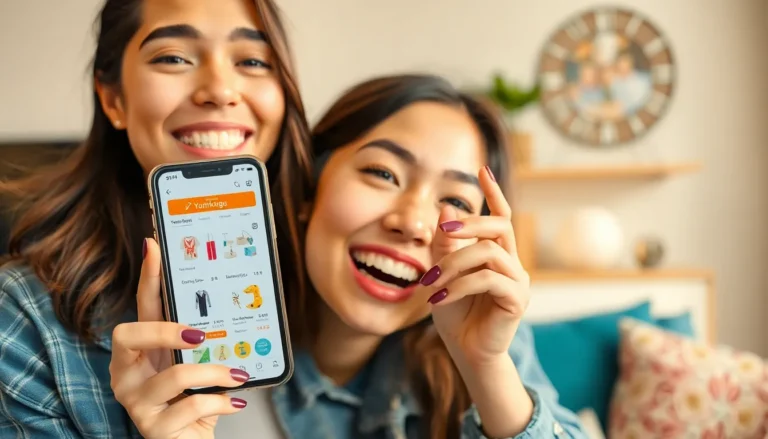In today’s fast-paced digital landscape, viral culture reigns supreme. One moment, a cat video steals the spotlight; the next, a meme has everyone in stitches. It’s a whirlwind of creativity and chaos where trends rise and fall faster than a toddler’s attention span. Understanding this phenomenon isn’t just fun; it’s crucial for anyone wanting to navigate the online world.
From TikTok dances that break the internet to hashtags that spark global conversations, viral culture shapes how people connect and communicate. It’s a playground for marketers, influencers, and everyday users alike, each trying to catch that elusive wave of virality. So buckle up and get ready to dive into the wild world of viral culture, where the only constant is change—and maybe a few catchy tunes.
Table of Contents
ToggleUnderstanding Viral Culture
Viral culture encapsulates the rapidly evolving trends that dominate digital platforms. Recognizing its significance aids individuals in navigating today’s online landscape.
Definition of Viral Culture
Viral culture refers to the phenomenon where content gains immense popularity and spreads rapidly across social media and other online platforms. This content, which can include videos, memes, and hashtags, captures public interest and leads to widespread sharing. When users engage with this material, they amplify its visibility, contributing to its virality. The ability for content to resonate with audiences often dictates its success. Different factors, such as relatability, humor, or shock value, enhance its potential for sharing.
Key Characteristics of Viral Culture
Several key traits define viral culture. First, short-form content typically garners the most attention, often due to its digestible format. Second, emotional resonance plays a crucial role, as content that elicits strong feelings encourages sharing. Third, timeliness influences virality; trending topics attract more engagement. Fourth, community involvement amplifies reach, with users participating in challenges or discussions. Lastly, creativity stands as a vital element, as original ideas or unexpected twists captivate audiences. Understanding these characteristics enables effective participation in viral trends.
The Evolution of Viral Culture

Viral culture has transformed significantly, influenced by various factors over the years. In its early days, content spread primarily through email and forums, showcasing the beginnings of online sharing.
Historical Context
Early viral content often consisted of simple jokes, images, and chain emails circulating among small groups. The launch of platforms like YouTube in 2005 marked a pivotal moment, allowing videos to reach broader audiences rapidly. Viral campaigns emerged as businesses recognized the potential for brand engagement. Over time, platforms evolved, and trends like memes gained traction, reshaping how individuals interact with content. Key events, such as the viral success of “Charlie Bit My Finger,” highlighted the unexpected nature of what captures audiences.
Impact of Technology and Social Media
Technology advances played a crucial role in the rise of viral culture. Social media platforms like Facebook, Twitter, and later TikTok transformed content sharing, fostering immediate engagement. Algorithms that prioritize popular content encourage rapid dissemination, while mobile devices enable easy access to engaging material. Creators leverage these tools to craft shareable videos and challenges, maximizing visibility and virality. It’s essential to recognize how platforms emphasize user engagement, creating a feedback loop that amplifies trends. This environment nurtures a culture where creativity thrives, promoting constant evolution in viral content.
Mechanisms Behind Viral Culture
Understanding the mechanisms behind viral culture unveils how content captures attention and spreads rapidly. Multiple factors contribute to this phenomenon.
Content Creation and Sharing
Content creation involves various formats such as videos, memes, and graphics. Each format engages users differently, prompting shares across platforms. Authenticity resonates with audiences, encouraging them to participate by sharing and commenting. Short, visually appealing content often performs best, making it ideal for quick consumption. Social media serves as the primary conduit for sharing, which amplifies reach. Influencers play a significant role, leveraging their audiences to propagate trends further. Hashtags enhance visibility, enabling users to discover and engage with content effortlessly. This threshold of shareability drives viral potential, transforming everyday posts into widely recognized trends.
Emotional Triggers and Audience Engagement
Emotions significantly influence the virality of content. Humor, nostalgia, and surprise often evoke immediate reactions from viewers. Content that elicits strong feelings encourages shares, driving engagement across platforms. Timeliness enhances relevance, allowing content to resonate with current events or emerging trends. Users are more likely to interact when they relate emotionally to the content presented. This sense of community fosters discussion and connection among individuals, strengthening the shared experience. Creators who effectively tap into these emotional triggers significantly boost their chances of going viral, leading to widespread recognition and interaction.
Case Studies of Viral Culture
Examining case studies provides insight into the mechanisms of viral culture. Several notable examples illustrate how particular campaigns and trends have achieved widespread attention.
Successful Viral Campaigns
Successful campaigns often blend creativity with cultural relevance. For instance, the “Ice Bucket Challenge” raised awareness for ALS and engaged millions through participatory content. In 2020, the “Wipe It Down” challenge on TikTok became a sensation, encouraging users to creatively showcase transformations. Both campaigns utilized social sharing to amplify their reach effectively. Leveraging hashtags increased visibility exponentially while driving user participation. Marketers recognized the importance of emotional appeal and community involvement, leading to higher engagement rates in these campaigns.
Analysis of Viral Memes and Trends
Viral memes often capture a fleeting cultural moment. For example, the “Distracted Boyfriend” meme humorously represents indecision and has seen countless adaptations. Factors that contribute to a meme’s virality include relatability, humor, and shareability. Trends on platforms like TikTok rely heavily on succinctness and creativity, such as the “Ratatouille: The TikTok Musical” phenomenon, which involved community collaboration. Identifying emotional triggers within these memes fuels sharing, as users find common ground with humorous or poignant content. Timeliness also plays a critical role; memes that react to current events tend to garner quick engagement and widespread dissemination.
The Role of Influencers in Viral Culture
Influencers play a crucial role in shaping viral culture by driving trends and engaging audiences. Their reach and credibility can make content spread rapidly across platforms.
Influencer Impact on Content Virality
Influencers possess large followings that amplify content visibility. They create authenticity, encouraging fans to interact with shared posts. Emotional connections between influencers and audiences foster trust, making users more likely to share their content. Trends often gain momentum when influencers participate, as their endorsements can validate ideas or challenges. As creators engage genuinely with their audience, they enhance the likelihood of content going viral.
Case Examples of Influencers Shaping Viral Culture
Various influencers have transformed how content spreads. For instance, the “Ice Bucket Challenge” received widespread support from celebrity endorsements, increasing participation and awareness for ALS. Similarly, Charli D’Amelio’s TikTok dance challenges sparked viral trends, demonstrating the power of influencer participation. These examples showcase how influencers blend creativity with cultural relevance, effectively leading to viral moments. Trend-setting figures utilize their platforms to highlight social causes or entertainment, reshaping conversations and capturing public interest.
Viral culture continues to shape the way content is created and consumed in the digital age. Understanding its nuances is essential for anyone looking to make an impact online. As trends evolve at lightning speed the ability to adapt and engage with audiences becomes crucial.
The interplay of creativity emotional resonance and community involvement drives the virality of content. Whether through humor nostalgia or timely relevance the factors influencing virality will keep changing.
For marketers influencers and everyday users embracing these dynamics can lead to successful engagement and sharing. Staying attuned to the pulse of viral culture will empower individuals to navigate the ever-shifting landscape of online trends effectively.




